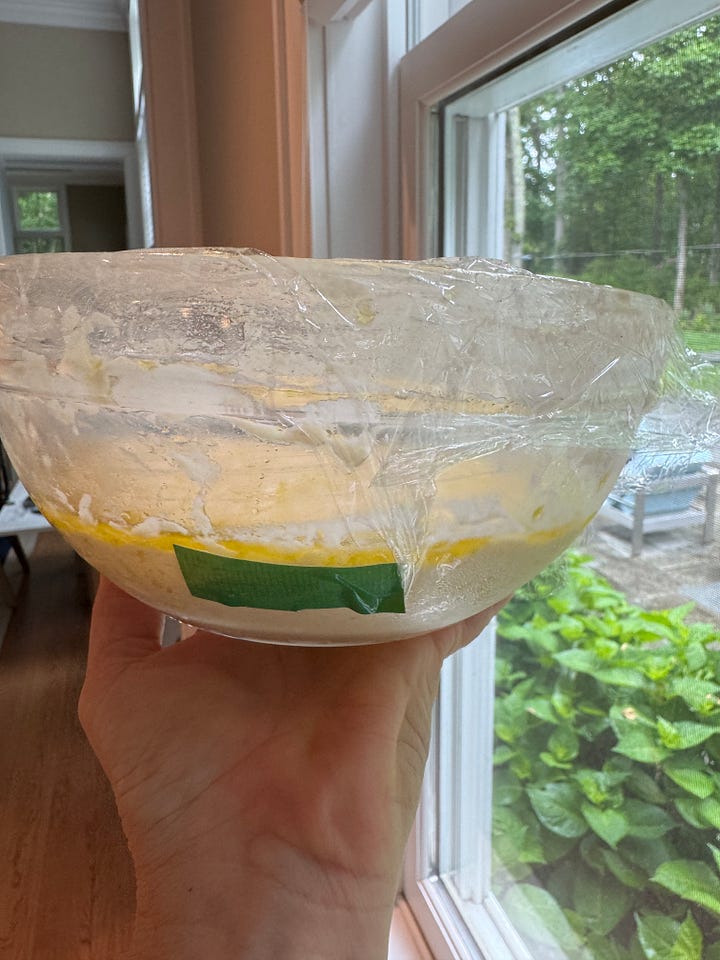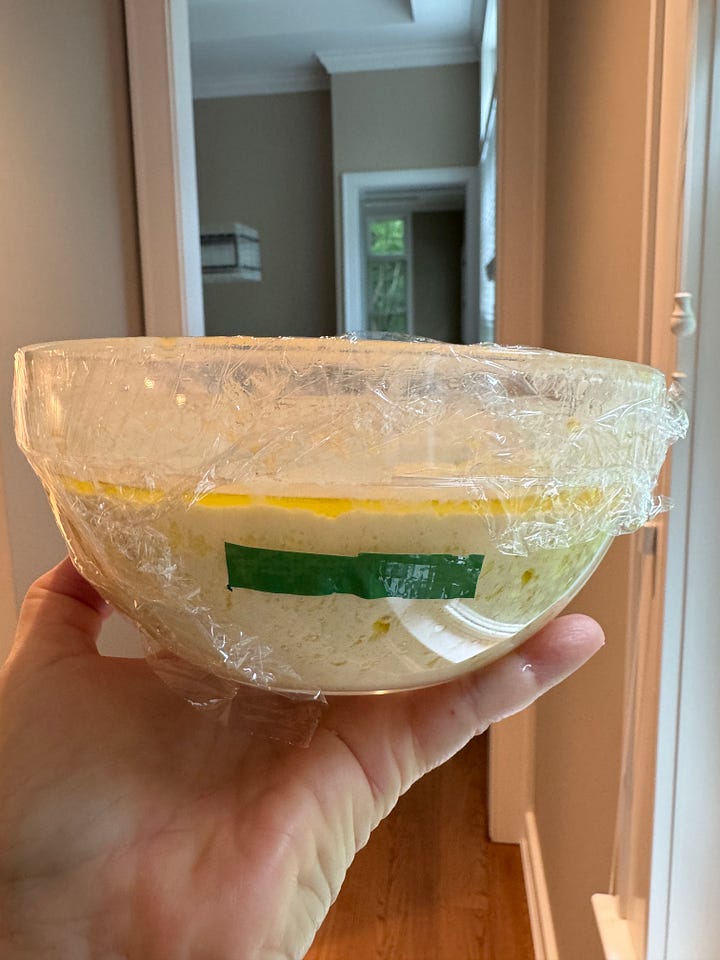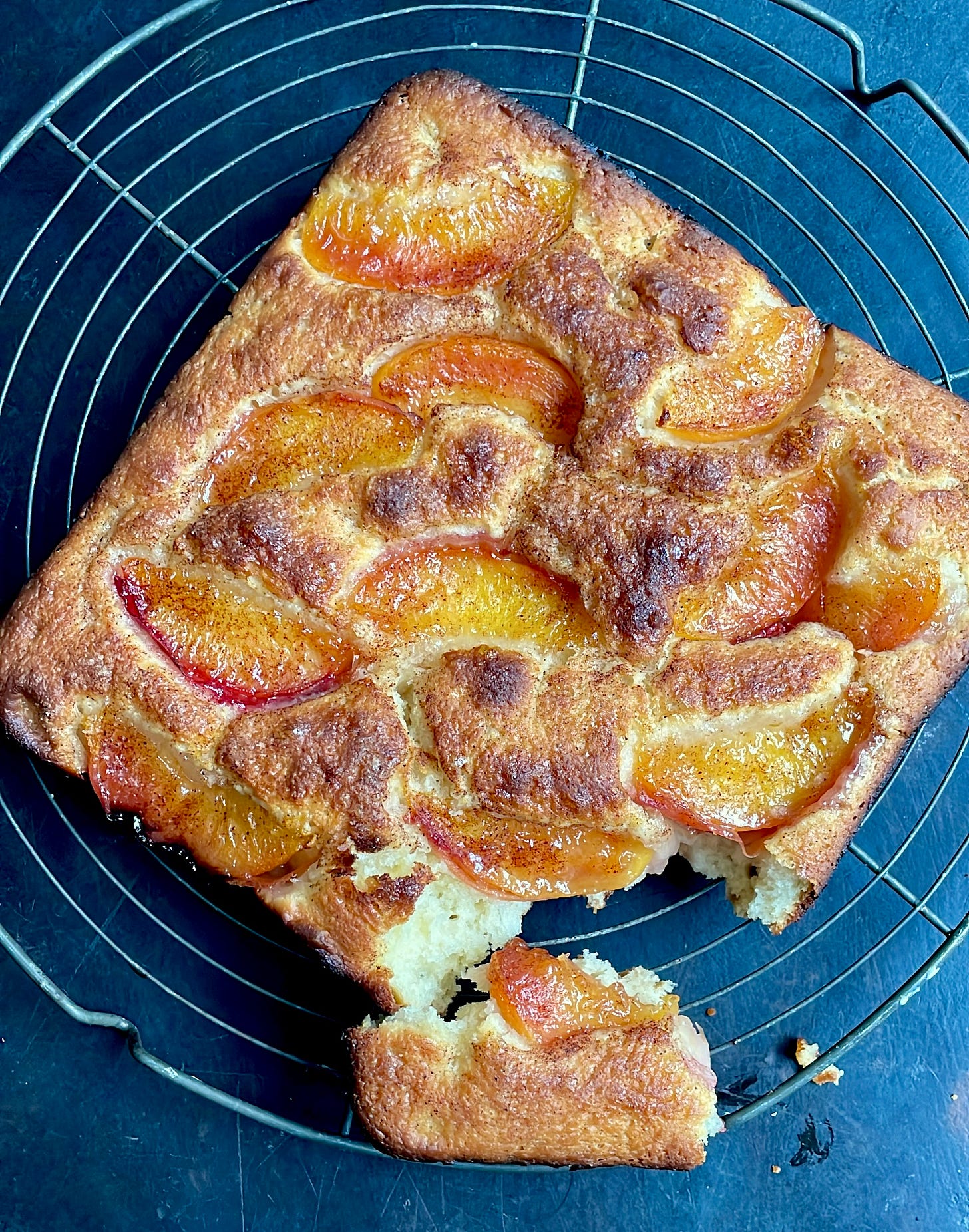A Sweet Focaccia for All Your Favorite Summer Fruits
Starting with juicy strawberries and tangy rhubarb
A few weeks ago, when rhubarb finally poked its pretty pink head up from the earth and officially announced the start of spring, my wheels started turning about what to do with it. I considered making a rhubarb coffee cake, but after further research, I decided it was too much work and maybe not quite what I had in mind.
Years ago, when I was the pastry chef at an Italian restaurant, I made a sweet focaccia as part of my dessert menu. The dough was enriched to make it taste and feel somewhere between brioche and focaccia— a step above the “dessert” focaccias many restaurants serve that use the standard dough topped with sugar instead of salt. This dough is made richer and denser with sugar, egg yolks, and butter, which weigh down the dough during the rising process; you will have to take my word for it when I tell you how long to let it “rise,” as it really doesn't rise much at all. That is partially due to the teeny amount of yeast used and the aforementioned rich ingredients, but you can trust that it is fermenting and developing flavor during this time, despite its size.
There are two ways to go about making this focaccia. The first way is all in one go: the dough is mixed and allowed to rise slightly at room temperature before it is transferred to the pan and to rest and rise again. The bigger, most dramatic rise happens when the pan of dough hits the intense heat of the oven and sends all of those lovely bubbles to the surface.
The second way is to mix the dough and let it sit in the refrigerator for one or even two nights. It will be in a state of suspended animation and will rise very little, if at all. Fear not! Proceed with the recipe as written, and I promise it will bake into bubbly, airy deliciousness in the oven. With the fruit on top, the dough will puff up around it, making it look like you dropped something heavy onto a very soft pillow.
After making this at least four times, I decided to test it once more. Well, two more times: one for the strawberry rhubarb version and another for a peach version, so I could be sure to tell you to use any fruit you like and make it all summer long. I was a little more scientific this time, measuring exactly how much the dough rose, or didn't.


I tore apart the first batch the moment it came out of the oven. I loved it, but asked myself: what exactly is this? Is it dessert? Hmmm, not exactly, but it could be, especially if you split it, toast it, and make it into an ice cream sandwich. Or simply serve it warm with some ice cream on top. It’s tender enough to eat with a fork, especially with ice cream melting into it. Ultimately, I would put it into the category of a brunch bread, like a muffin, or a scone. If you’re the type of person who takes afternoon tea, it would work nicely there too. But is it important to know exactly what it is? I think not!
As for using other fruit, I tried it with peaches, and it worked great. I sliced one ripe, but firm, peach into 16 slices, sauteeing it in a pan for 2 to 3 minutes in 1 tablespoon of butter and 2 to 3 tablespoons of sugar until there was plenty of syrup, which I reduced a little after kicking the peaches out of the pan and onto a plate to cool. I topped it with a generous sprinkling of cinnamon sugar. Whatever fruit you use, cook it briefly first so there’s syrup to dribble over the top of the dough. It will seep down the sides of the pan during baking to create caramelized edges; don’t bake it any longer than necessary, or they'll become burnt edges. In my oven, 25 minutes was perfect every time, but keep an eye on it. If it looks nice and brown on top, and the edges are threatening to get too dark, by all means pull it at 20 minutes. Then make sure to run a knife around the edges as soon as possible and scoot it onto a wire rack so it doesn't get stuck, and the bottom doesn't get soggy. I like to use a fish spatula, as you probably already know, for just about everything, and it works well here to separate the focaccia from the pan in the center if any sticking occurs.

This is the kind of recipe that lends itself to almost anything that summer throws at you. Cherries, plums, apricots, or grapes would all be excellent additions to this dough, melting into sweet, jammy tastes of the season. It’s an impressive end to the meal. I hope you’ll make it, and let me know how it goes!
Strawberry-Rhubarb Focaccia
Serves 4 to 6
Keep a close eye on this after it reaches the 20-minute mark. The juices should be bubbling near the edge, but be careful not to let them burn, and turn bitter.






